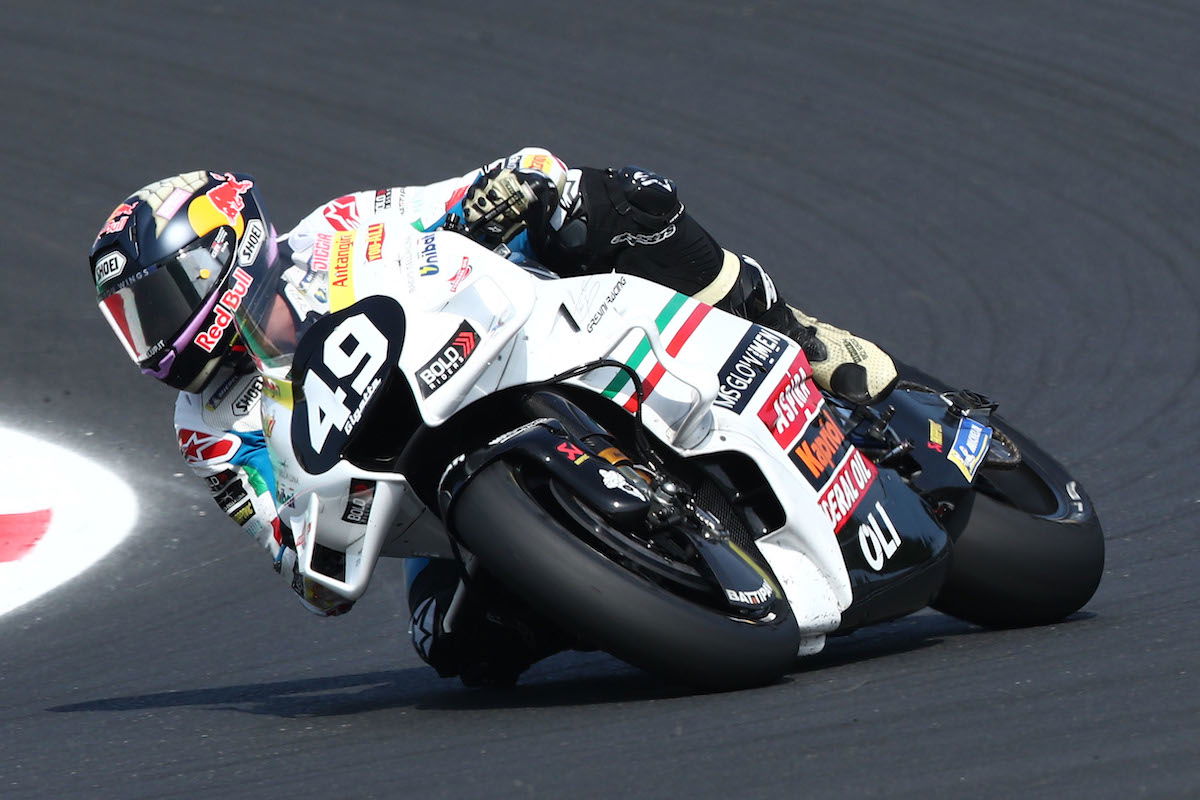Z Marks the Spot | Top 10 Greatest Kawasaki 'Z' Motorcycles over 50 years
The Kawasaki Z suffix has been a mainstay of the Japanese firm's range for decades... but which of the Kawasaki 'Zeds' ranks as the best in 50 years?

The launch of the Kawasaki Z650 RS, the Japanese giant’s new junior retro roadster writes another key chapter for its half century old line of ‘Z’ models.
Following on from the success of the bigger Z900RS (which has for 2022 spawned an Ohlins-equipped ‘SE’ version) and hints being dropped about something special to celebrate the 50th Anniversary of the first-ever ‘Zed’ - the 1972 Z1 900 - we began thinking: What is the greatest Kawasaki ‘Z’ of all?
And we’re not just talking about ‘70s bikes, either. On top of landmark machines like the ’72 Z1 and Z650 from 1976, you also can’t ignore 21st century Zeds such as the revived 2004 Z1000 or more recent Z800 or even that original ‘racer replica’, the 1982 Z1000R?
So we decided to pick our 10 of the best. Not all ‘Zeds’ were brilliant, of course. The ‘Z2’ Z750 twin was, by all accounts, something of a turkey and 1977’s single cylinder Z200 was so flaccid it was the polar opposite of the Z1.
Nor are we including spin-offs such as the GPz series but that still left plenty to choose from. Here’s our pick of the 10 best…
![Kawasaki Z250 ‘Scorpion’ [1972]](https://cdn.visordown.com/kawasaki-z-250ft-1982-1983[1].jpg?width=1600)
10. Kawasaki Z250 ‘Scorpion’ [1972]
Those of a certain age will vividly recall the hugely competitive ‘learner’ 250 class of the late 1970s/early 1980s and you’ll likely have had a personal favourite type of Japanese quarter-litre machine.
Trail bike fans had both two and four-stroke singles such as Yamaha’s DT and XT 250s, stroker sports bike loons dribbled over the iconic Yamaha LC, Suzuki’s X7 and Kawa’s KH triple while, most popular of all were ‘sensible’, more versatile four-stroke twins such as Honda’s CB250N Superdream, Yamaha’s XS250 and Suzuki’s GSX250.
Best of this latter bunch, however, was probably Kawasaki’s Z250A ‘Scorpion’. Largely developed in the UK its SOHC twin put out a competitive 27bhp, its chassis featured cast wheels and disc brakes at both ends, its smart styling was every inch ‘baby Zed’ and advertising campaigns were fronted by 1978 and 1979 250cc world champion Kork Ballington. In short, this 250 ‘Zed’ had it all.
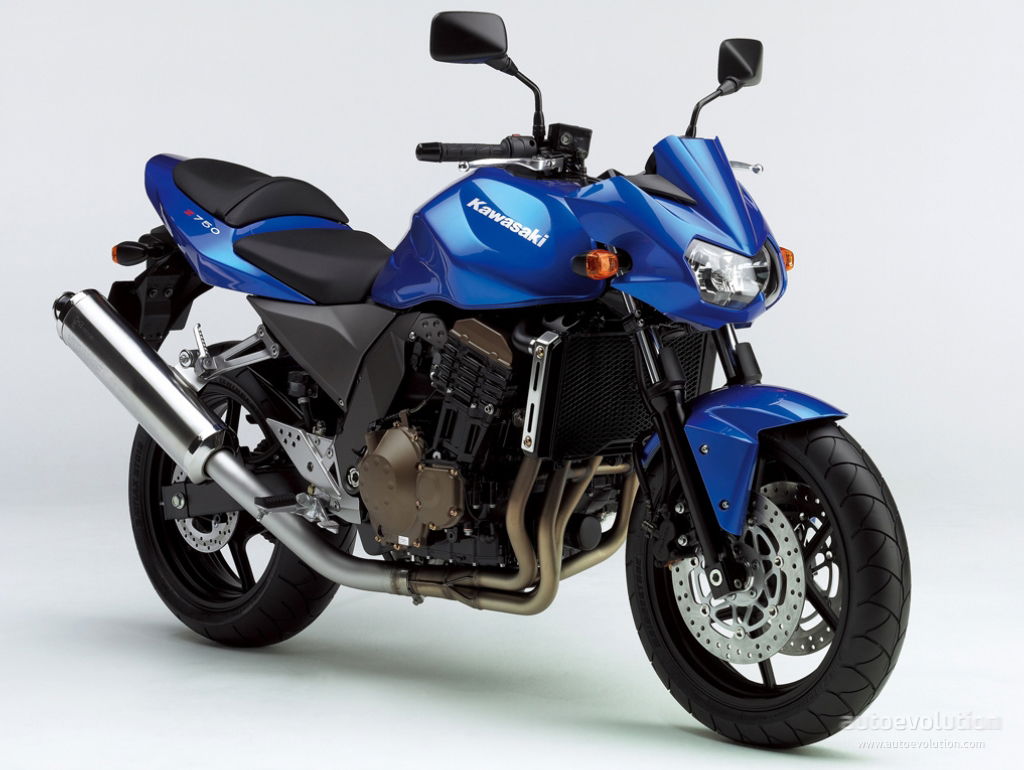
9. Kawasaki Z750 [2004]
Kawasaki revived its ‘Zed’ model naming protocol with the budget-orientated 2004 Z750 roadster (together with the bigger Z1000) and although it was criticised for its lack of sophistication, its blend of 100bhp performance, decent style and great value made it hugely popular – particularly in France where it became a best-seller.
Its engine was a sleeved-down version of that from the ZX-9R, its brakes were just two-pot Tokicos and its suspension fairly basic and unrefined, but in terms of ‘bang for your buck’ nothing came close.
Its success led to the Z750R, then Z800 and today’s Z900 and it’s fair to say that, without the Z750, the whole revival of the Zed series which continues to this day may never have happened.
![Kawasaki Z400J [1980]](https://cdn.visordown.com/rightside-DSCN3731.jpg?width=1600)
8. Kawasaki Z400J [1980]
Although Honda’s CB400F four is famed for being the first ‘mini superbike’, the later and less-well remembered Kawasaki version, the Z400J, was the far better bike. The Kawasaki’s sleeved-down, DOHC transverse four was more sophisticated and powerful than the Honda’s SOHC version, producing 43bhp compared to the Honda’s 37.
Its chassis was more sophisticated with leading axle forks and cast wheels and it was more modern-looking, too. In short, the 400J was a worthy ‘mini Zed 1’.
Unfortunately, like the Honda, it, too, was not a sales success, proving too late, too expensive compared to the likes of Yamaha’s then dominant 47bhp RD350LC stroker and, as a result, only remained in production for three years.
But if you want a genuine, four cylinder Zed in an exquisite, pint-sized package, there’s none better.
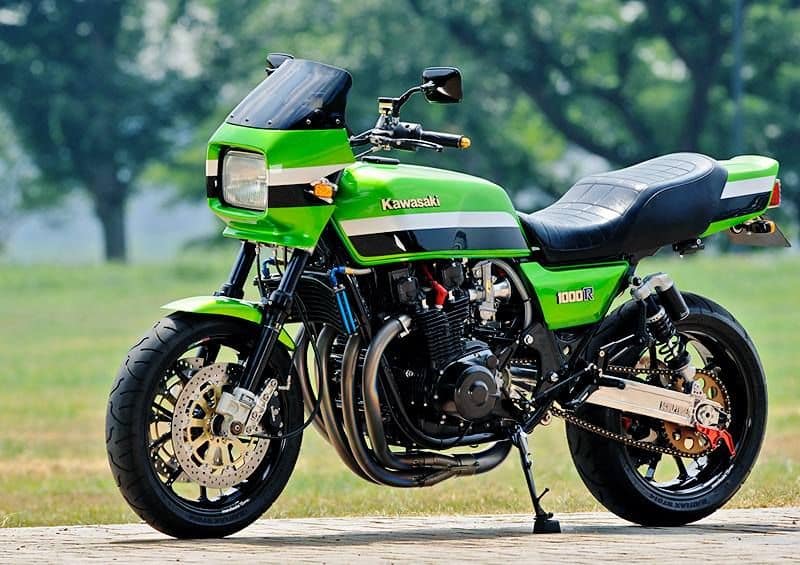
7. Kawasaki Z1000R ‘Eddie Lawson Replica’ [1982]
Something of a ‘last hurrah’ for the air-cooled ‘UJM’s of the 1970s, the ‘ELR’ marked the end of twin shock, air-cooled, four-cylinder Japanese superbikes before a new era of more sophisticated, liquid-cooled, monoshock machines such as Honda’s 1983 VF750F and Kawasaki’s own GPz900R of the following year. But what a great way to go out!
It was inspired by Eddie Lawson’s 1981 (and ’82) AMA Superbike championship winning machines, based on the already impressive Z1000J and gained race-replica bikini fairing, Kerker 4:1 pipe, chopped down seat and also revised steering geometry rearset pegs and a full 41lbs weight loss.
Unfortunately Kawasaki also chose to sell it in the UK in white not ‘Team Green’ livery and its peak power, at 102bhp, was no better than the J, both hitting sales. This was rectified with the green, 120bhp Z1100R in 1984 but by then it was too late. As a classic ‘Zed’ today, however, not much comes close…
![Kawasaki Z800 [2013]](https://cdn.visordown.com/verde_cleme.png?width=1600)
6. Kawasaki Z800 [2013]
Although often overlooked and under-rated, the 2013 successor to the Z750 was actually a well-thought out, capable, decent performing middleweight that was well equipped and finished and overall the biggest rival to Triumph’s superb Street Triple.
Kawasaki upped the spec, performance and price and the result was a fine-handling, 111bhp four which, although slightly heavy, did it all.
There were also new four-piston brakes, multi-adjustable suspension and even fancy LED lights and although the slightly odd styling wasn’t to everyone’s taste it was another big hit, lived on for five years and ultimately led to the Z900 on which the latest Z900RS is based.
![Kawasaki Z1-R [1978]](https://cdn.visordown.com/s84-1-1506375339630@2x.jpg?width=1600)
5. Kawasaki Z1-R [1978]
Although decried by some as an expensive, insufficient stop-gap, the Z1-R was also arguably the ultimate incarnation of the original, 1972 Z1 900.
The first of a new breed of Kawasakis with more modern, angular styling, the Z1-R had a pioneering handlebar fairing (the first Japanese superbike to do so, a year before Suzuki’s GS1000S), slimline 13-litre fuel tank, with its bodywork finished in a striking, metallic bluey-silver.
Nor was it ‘all show and no go’. Although its 1015cc two-valve four-cylinder motor was basically the same as that of the standard Z1000A2, a move to 28mm carbs (from 26mm) plus four-into-one exhaust helped raise power from 83 to 90bhp (making it the most powerful ‘Zed’ yet) and the chassis was uprated with smart, seven-spoke cast alloy wheels and drilled discs.
Although not a success at the time (it was outpaced and out-handled by Suzuki’s new GS1000 and also £300 more expensive) the Z1-R was a true poster bike and today is one of the most collectable of all ‘Zeds’

4. Kawasaki Z1000 [2004]
Launched in 2004 reviving a great old Kawasaki name from the past, the Zed thou’ proved a big hit for its different, more affordable take on the super naked theme.
Its detuned 125bhp motor was derived from that of the old ZX-9R, its chassis, if a little basic and inexpensive, was up to the job, it looked and sounded good (although its original ‘shotgun’ four silencer pipes proved controversial) and, best of all, it was affordable, enough to prove a great success.
A mildly updated version followed in 2007 (without the odd pipes) before total revamps first in 2010 then in 2014, throughout which Kawasaki’s new king ‘Zed’ developed a devoted following.
Those early examples in particular remain cherished to this day.

3. Kawasaki Z650 [1976]
Just when 1970s bikers were beginning to think Kawasaki’s 1972 Z1 900 was a one-off, the Japanese giant shocked the motorcycling world once again with the 1976 Z650.
Designed by the same genius behind the Z1, Gyoichi ‘Ben’ Inamura, the Z650 was an all-new, aircooled, DOHC, transverse four but this time a middleweight aimed at a more mainstream market. As such, the Z650 was arguably an even more important machine than the Z1.
It was more innovative, technically, in using plain crank bearings in place of the Z1’s rollers, a Hy-Vo chain between crank and transmission instead of the Z1’s gears and as a result was both smoother and less expensive to make.
And although never as much of a ‘poster bike’ as the Z1, the 650 was commercially more significant, in forming the basis of nearly all four-cylinder Kawasakis for the next decade.
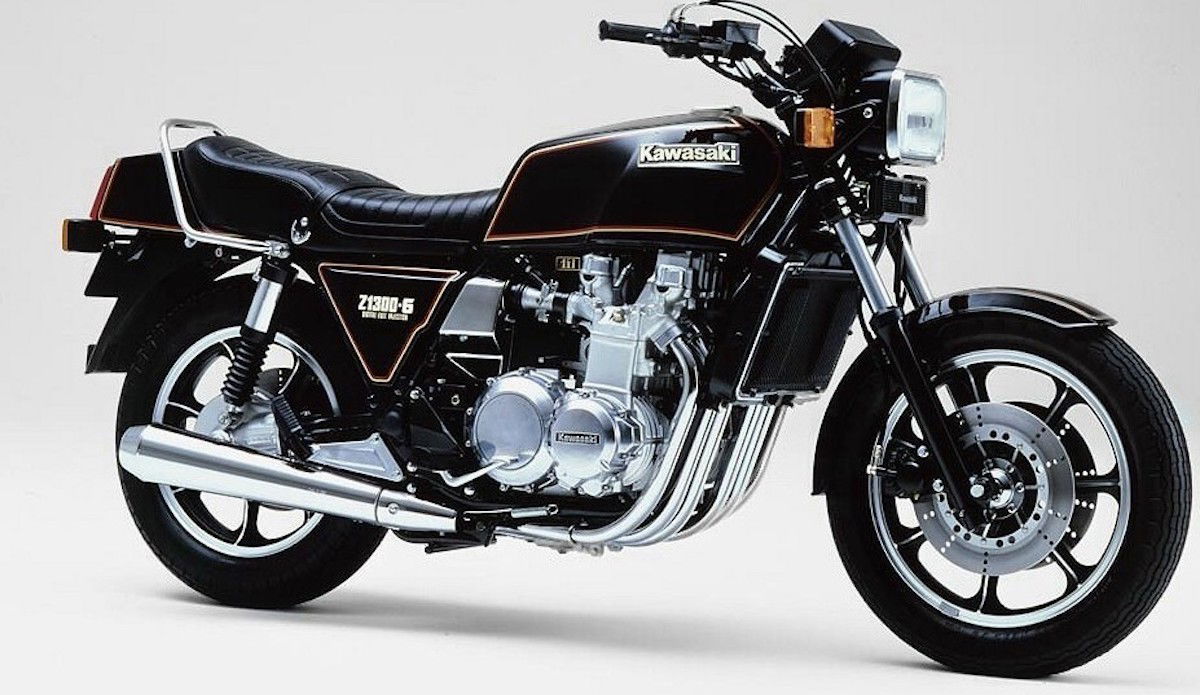
2. Kawasaki Z1300 [1979]
No Zed has been bigger before or since than the monstrous, six-cylinder, 1979 Z1300. In development since 1974, it was a conceived as a bigger, non-two-stroke, ‘showbike’ successor to Kawasaki’s Mach III and Mach IV triples.
A capacity of ‘at least 1200cc’ was in response to Honda’s GL1000 Gold Wing, an inline six was decreed to distinguish it from the increasingly commonplace transverse fours, and shaft-drive, commissioned from Isuzu, was necessary as no chain was then capable of handling its projected 120bhp. Unveiled at the 1978 Cologne Show it caused a sensation.
Unfortunately, however, sales were slow largely due to its weight and expense and it was never the success hoped for. Even today, though, no Zed makes a bigger impression.
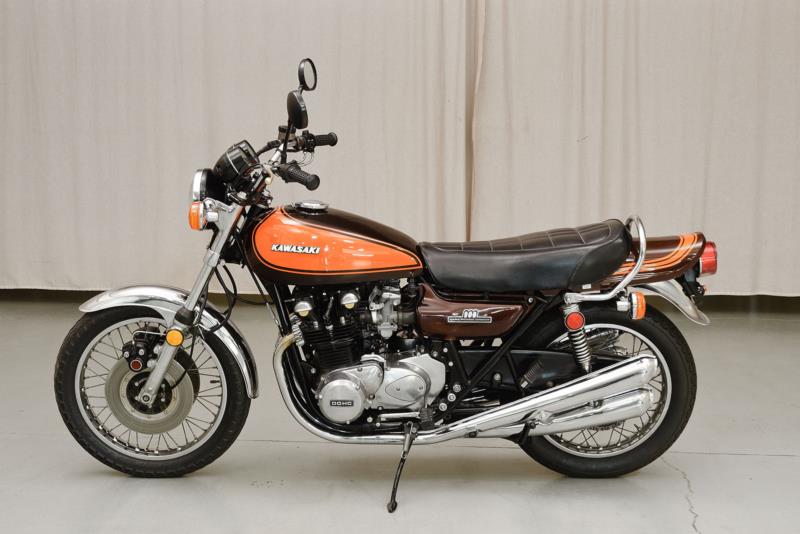
1. Kawasaki Z1 900 [1972]
Honda’s 1969 CB750 may have been the first superbike but the Z1 which followed from rivals Kawasaki was every bit as significant.
Designed to leapfrog the CB in every way, the big Zed, at 903cc and with twin cams producing a whopping 82bhp, was bigger, more sophisticated and more powerful and established a new superbike benchmark that would dominate the decade. It did just that.
The Z1 was not only the most powerful, fastest superbike around, right up the 1977’s Suzuki GS1000, it became the go-to engine for racers, drag strip demons and specials and was voted Machine of the Year four years in succession. King of Zeds? Not ‘alf…
